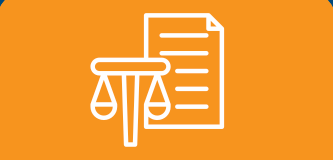
Defining and Measuring Equitable Rural Prosperity
Investments in rural communities from government, philanthropy, and private lenders are usually judged by short-term outputs such as how many jobs were created or how many loans were issued. These measures rarely account for who benefits from those jobs or loans or whether the investment damaged other community assets.
Achieving durable and holistic prosperity requires development decisions that balance outcomes across people, the economy, and the environment. That includes reducing inequality and poverty and protecting core natural resources alongside business growth and job retention. Supporting well-being in more rural places depends on taking this longer-term view.
Why Does Balanced Development Matter?
Investments from government, philanthropy, and financial institutions frequently focus on economic outputs without assessing who gains or loses. In rural and tribal areas, this can widen disparities rather than close them.
To achieve equitable rural prosperity, development efforts must aim for a balance of outcomes that:
- Decrease poverty and racial inequality
- Build local ownership and community wealth
- Protect and sustain natural resources
- Strengthen long-term resilience and well-being
Taking this broader perspective ensures that prosperity endures—and that rural communities shape their own future.
The Evidence for Balanced Development
Research shows that traditional economic development assumes benefits are distributed evenly. However, persistent gender and racial wealth gaps reveal that this approach often fails to deliver inclusive outcomes.
In rural areas, balanced development requires:
- Improved rural data collection linked to measures of wealth, resilience, and equity.
- Standardized metrics for equitable growth that assess both short- and long-term progress.
- Actionable equity measurement, considering historical disparities, community assets, and lived experience.
These measures help identify who is benefiting from growth—and who may be left behind.
Principles and Strategies for Equitable Growth
Research shows that equitable economic development should focus on:
- Small-business growth and local entrepreneurship
- Accessible jobs and workforce development
- Financial health and family stability
- Affordable, inclusive housing and neighborhood quality
- Collective action against systemic barriers such as racism and disinvestment
Policies and programs can reinforce these goals through community benefit agreements, local hiring standards, and fair-wage practices.
Measuring Balanced Rural Development
To track progress toward balanced rural development outcomes, communities and funders should measure across multiple dimensions:
- Economic Equity: Jobs, wages, and ownership are distributed fairly across racial, gender, and geographic lines.
- Wealth Building: Growth in locally owned businesses, assets, and cooperative enterprises.
- Social Well-Being: Improvements in housing, health, and education outcomes.
- Environmental Resilience: Sustainable land use and preservation of natural resources.
- Civic Participation: Inclusion of local voices in decision-making and governance.
Using disaggregated data and community-defined success indicators ensures that development remains equitable and accountable over time.
Building Block Evidence
Evidence suggests this building block of balanced development is important because traditional economic development assumes that the benefits of development are distributed evenly across communities, without considering benefits or harms to specific groups.1 However, experts note that significant gender and racial wealth gaps in the US illustrate that this approach does not benefit all community members, and development approaches that prioritize equity are needed.1 In rural places, balanced development outcomes will stem from improvements in rural data collection,2 linked to measures of wealth and resilience that reflect the unique characteristics, assets, and capital of rural communities.3,4
Researchers suggest the field should adopt standard measures of equitable growth and collect and disaggregate data to discern progress over the short and long term.1 Dimensions of equity to consider include historical legacy, which suggests equity be understood “cumulatively” in light of “past disparities, discriminatory practices, and exclusion”.5 (For a complete theoretical background of dimensions of equity to consider for use in measurement, see Urban-Martin 2019.5). Recent research also offers guidance for evaluating initiatives’ impact on community resilience.6 Data collected across sectors—such as housing, health, education, and the environment—should include “activities or groups that are likely locations of inequity” and experts emphasize that “equity measurement should be actionable.”.5
One framework for equitable economic development (EED) suggests strategies focused on “small-business expansion, accessible jobs and skills development, strengthening family financial health, and fostering quality neighborhoods” alongside “collective address of interacting barriers to opportunities”—including communities’ past and present experiences of racism and oppression.1 Stipulations for business grants or loans can include hiring locally, paying a living wage, and offering entry-level positions. These are common features of community benefits agreements, negotiated by coalitions representing local residents.7 Community Development Financial Institutions (CDFIs), such as the National Association for Latino Community Asset Builders (NALCAB), can support community-based nonprofit developers in strategies to prevent resident displacement and gentrification as part of affordable land and housing development.8 Community development organizations can also support initiatives; for example, LISC DC played a key role in the 11th Street Bridge Park project in Washington, DC.9
- Minzner 2020
- Urban-Payton Scally 2020
- Urban-Gold 2021
- NADO 2016
- Urban-Martin 2019
- Steiner 2016
- Boston Fed-de Barbieri 2017
- NALCAB 2021
- Urban-Bogle 2016
Curated Resources

Learnings on Rural Migration and Displacement
Insights for community leaders to balance rural migration, retain longtime residents, and develop more equitable local economies.
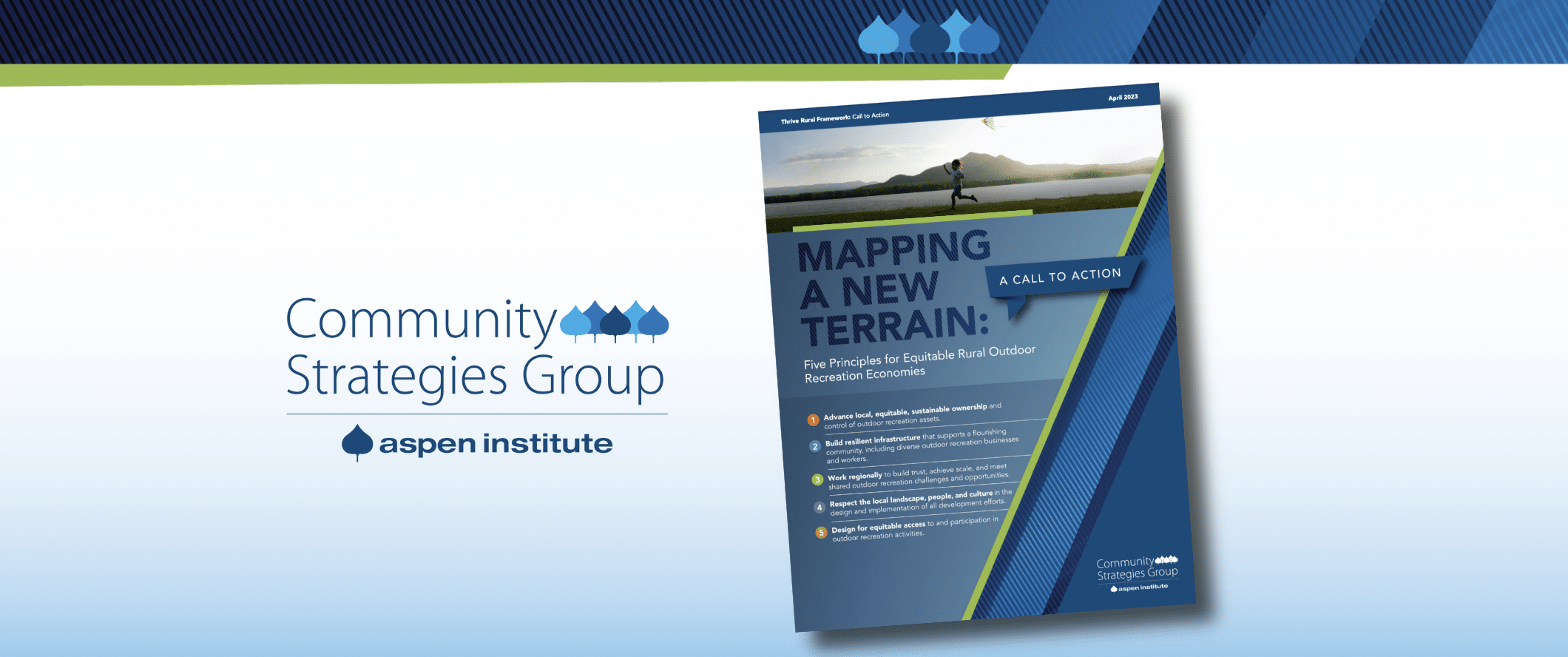
Mapping a New Terrain: Call to Action
As new rural outdoor recreation economies take root, we can meet this moment by improving how we do outdoor recreation development to better support rural families, businesses, and workers, create more sustainable and equitable economic systems, and improve local health and wellbeing.

Using Networks To Build Collaborative & Equitable Food Systems
This brief focuses on local food systems as vehicles for collaboration and racial equity among multiple stakeholders and networks.
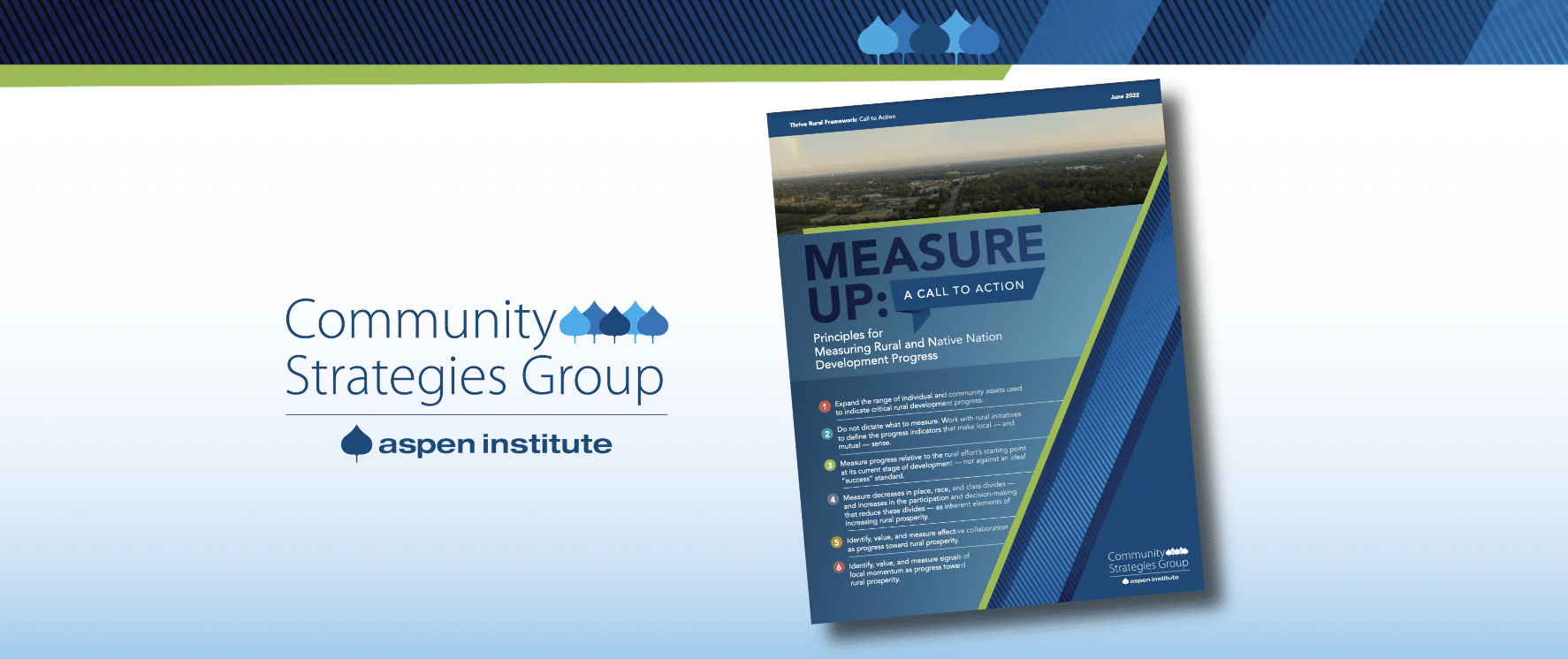
Measure Up: A Call to Action
Today, we have a generational opportunity to strengthen prosperity and equity in communities and Native nations across the rural United…
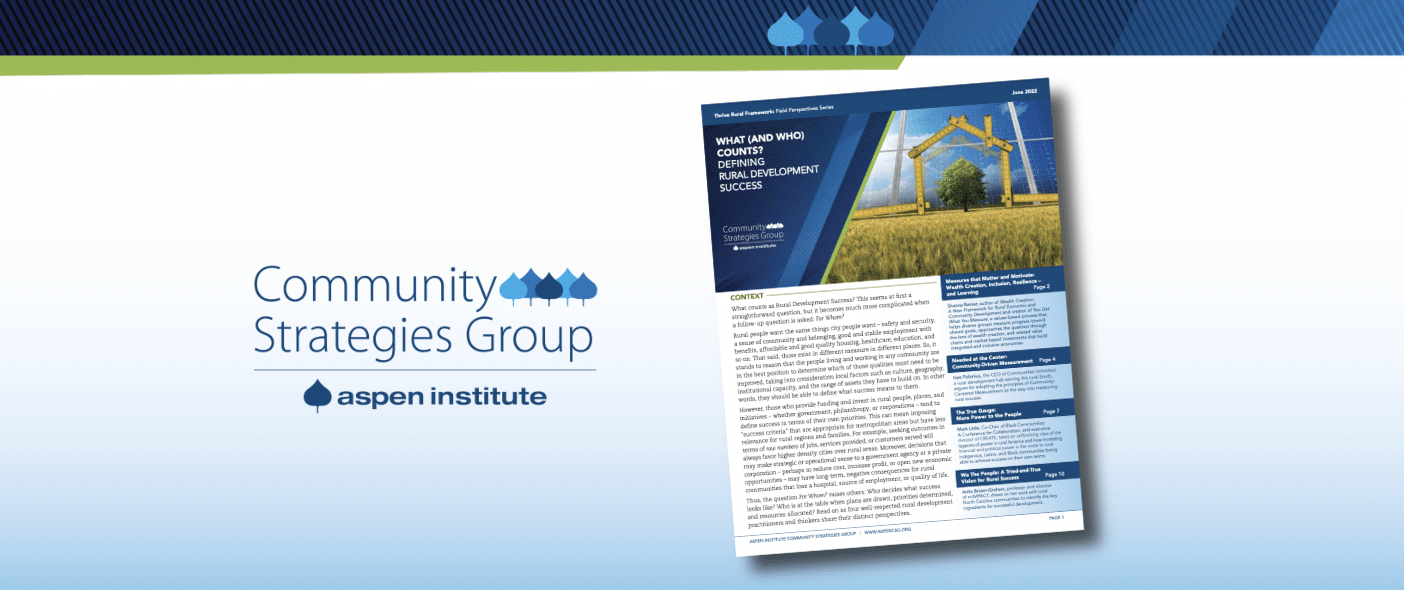
Defining Rural Development Success
There are no easy solutions for the many challenges that rural Americans face, but it’s clear that rural communities themselves…

Stewarding Land and Growing Rural Prosperity
Rural and Native communities have been stewarding the land for generations. Many are using new ways of growing nature and…

Rural Environmental Justice Practices & Resources
Practitioner insights and resources on rural environmental justice, including ideas on just and equitable energy transitions.

Climate Solutions for Rural Regions
A recent New York Times article detailed the climate-related pros and cons of using wood pellets for heating in the Southeast United…
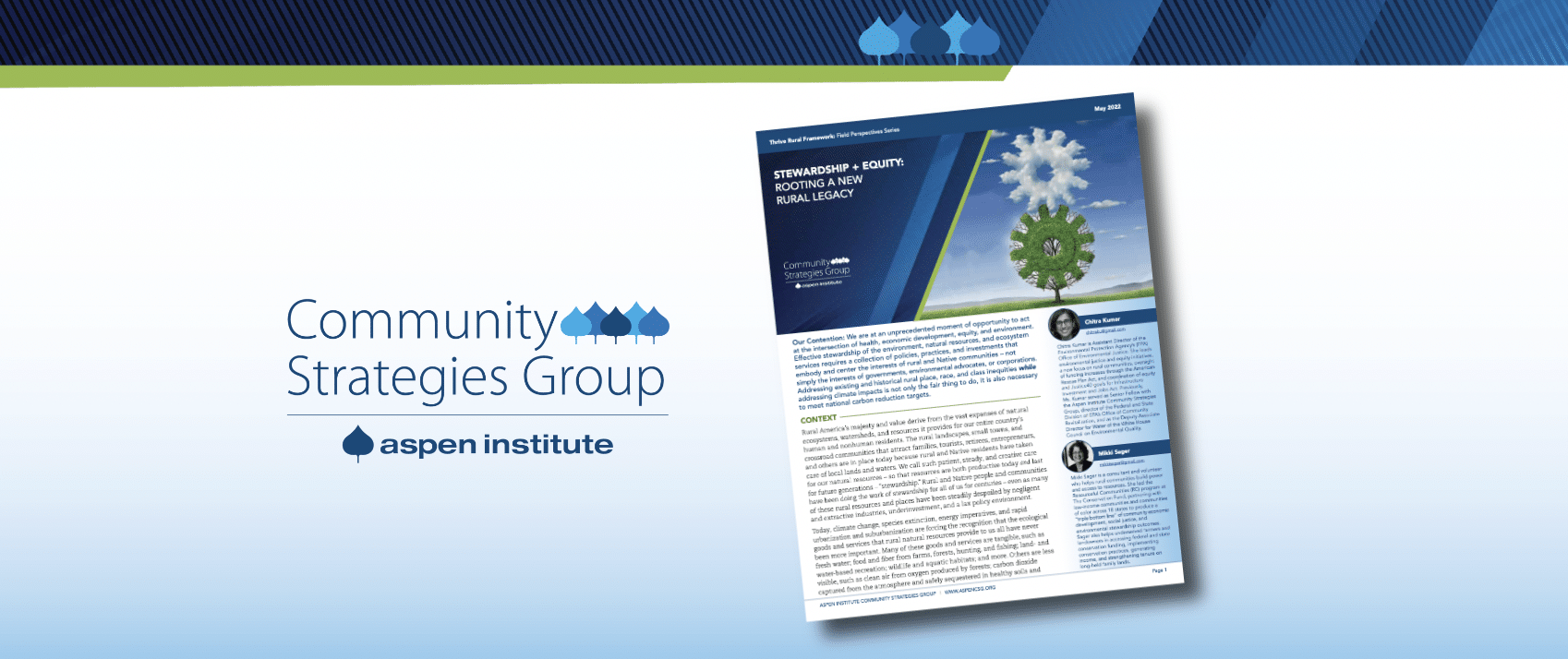
Stewardship + Equity: Rooting a New Rural Legacy
Rural and Native communities have been stewarding the land for generations. Many are developing new ways of growing nature and…

Collaboration and Innovation for a Better Rural West
Insights from rural leaders working across divided local public opinion, fractured economies, confusing policy and regulation, and litigation to forge productive local partnerships that benefit rural communities and their surrounding landscapes.

Outdoor Recreation Economies: Challenges & Opportunities
Outdoor recreation is driving new opportunities for local communities in many rural places. See ways to do economic development differently with rural recreation economies.

Tapping Rural Innovation for a Clean Energy Economy
Rural communities are integral to our nation’s economy, culture, history, and the environmental services that we all depend on. Yet…
Field Items Related to Balanced Development

ELKINS COMMUNITY CASE STUDY
West Virginia Community Development Hub
In Elkins, WV, creative business owners and city officials are bridging the arts and recreational tourism.

LESSONS FROM APPALACHIA ON INVESTING IN RURAL DOWNTOWNS
Invest Appalachia
This Playbook helps various stakeholders speak the same language of investment, identify key factors that enable investments to be successful, and provides examples of real investments that are leading to downtown revitalization in Central Appalachia.

COMMUNITY RESILIENCE ESTIMATES TOOL
United States Census Bureau
The US Census Bureau’s Community Resilience Estimates (CRE) program tool includes a new dashboard and data that helps users understand their communities’ social vulnerability and equity.

ECONOMIC DEVELOPMENT CAPACITY INDEX
Argonne National Laboratory
The Economic Development Capacity Index (EDCI), uses publicly available data to assess critical elements that contribute to a county’s overall economic development capacity.

THREE WAYS TO PROMOTE EQUITABLE RURAL INVESTMENTS
Urban Institute
Urban Institute highlights three ways practitioners, policymakers, and investors can use their new mapping tool to promote equitable investments for all types of rural communities.

MEASURING RURAL WEALTH CREATION
NADO Research Foundation
This guide from NADO Research Foundation introduces concepts of measuring progress in rural wealth creation for RDOs that are involved in community and economic development within their regions.

REIMAGINE APPALACHIA COMMUNITY BENEFITS AGREEMENTS RESOURCES
Reimagine Appalachia
Community Benefits Agreements (also known as CBAs or Community Benefit Plans) are legal agreements to get everyone – labor organizations, racial justice groups, environmental entities, faith communities and other local stakeholders – to work together and sign off to ensure the benefits of government dollars are optimized in our communities. This page collects resources on the topic that are useful for all communities.

REIMAGINING JOB QUALITY MEASUREMENT REPORT
The Families & Workers Fund
The Reimagining Job Quality Measurement report provides bold, actionable recommendations for government, philanthropy, business, and the nonprofit sector to strengthen how we collect, connect and use data to tell a fuller story about the economy and the experiences of the workers who power it.

THE ECONOMIC BENEFITS OF THE NEW CLIMATE ECONOMY IN RURAL AMERICA
World Resources Institute
Federal investment could support 260,000 rural jobs each year over at least five years to create new economic opportunities in rural places while addressing climate change.

DO COMMUNITY BENEFITS AGREEMENTS BENEFIT COMMUNITIES?
Federal Reserve Bank of Boston
Community benefits agreement (CBA) campaigns have become commonplace nationwide as a way to address income inequality in poor neighborhoods. The Federal Reserve Bank of Boston explored the actual effects of CBA campaigns on communities.
We see the framework as a living document, which necessarily must evolve over time, and we seek to expand the collective ownership of the Thrive Rural Framework among rural equity, opportunity, health, and prosperity ecosystem actors. Please share your insights with us about things the framework is missing or ways it should change.
